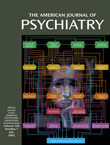Drs. Davis, Charney, Coyle, and Nemeroff have sculpted the fifth masterpiece of Neuropsychopharmacology. Following the new tradition set by its immediate predecessor, this edition provides an even more comprehensive overview of the preclinical and clinical arms of the field. The book not only provides basic and clinical scientists with overviews of preclinical and clinical psychopharmacology but also devotes more detailed coverage to help the reader understand the methods by which data in each of these arms are assessed in research. The introductory sections provide a basis for the detailed coverage of the enormous amount of progress that has been achieved since the previous volume.
Skillfully revised, updated, and restructured, Neuropsychopharmacology: The Fifth Generation of Progress incorporates the latest basic and clinical advances in neuropsychopharmacology and identifies promising new areas of investigation. In the tradition of its acclaimed predecessors, this volume establishes a critical bridge connecting the principles of molecular and cellular biology with the etiology, diagnosis, treatment, and prevention of neuropsychiatric disorders and substance abuse. More than any other work in the field, this book consistently and successfully integrates basic neurobiology, biological psychiatry, and clinical psychopharmacology.
The first four sections of the book cover preclinical and clinical psychopharmacology. The preclinical section features an extensive review and update of all currently known neurotransmitter systems and signal transduction. The following sections focus on molecular biology and genetics, with an especially appealing chapter titled “Applying Functional Genomics to Neuropsychopharmacology.” Section 3, Emerging Imaging Technologies and Their Application to Psychiatric Research, makes it easier for educators and clinicians to help medical students understand and accept the fact that the brain is the final frontier and psychiatry is the best field of medicine to practice in this century. Section 4, Drug Discovery and Evaluation, includes two very valuable chapters, “The Role of Pharmaceuticals in Mental Health Care Outcomes” and “Issues in Clinical Designs.”
The following nine clinical sections provide a comprehensive update on the etiology, biology, and treatment of the entire spectrum of psychiatric and neuropsychiatric disorders. Each section also includes critical analyses of current research methods and key integrative concepts. New chapters worth special attention include “Gene Delivery Into the Brain Using Viral Vectors,” “Diffusion Tensor Imaging,” and “Pharmacogenomics and Personalized Therapeutics in Psychiatry.”
This book has come a long way since the admirable
Psychopharmacology: The Third Generation of Progress (1). The new edition is a must for the library of every medical school, basic medical science, and psychiatric hospital library as well for all those who are in the basic and clinical fields close to neuropsychopharmacology.
A bonus to obtaining this book is that it gives the purchaser the option to gain free online access to Neuropsychopharmacology, the official journal of the American College of Neuropsychopharmacology. A must-do for everybody who purchases the book!

